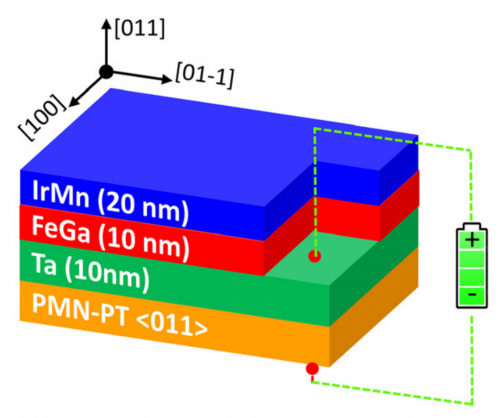These results stem from strain-mediated magnetoelectric coupling. The applied electric field causes changes in the coercivity and the squareness ratio of the films, suggesting a reorientation of the effective magnetic easy axis in Fe80Ga20. However, larger HEB values are observed when the squareness ratio is lower. It is claimed that the effect of voltage is equivalent to an in-plane component of an applied magnetic field oriented perpendicular to the cooling field direction. Perpendicular in-plane magnetic fields have been shown to induce an increase in exchange bias in some ferromagnetic/antiferromagnetic systems due to partial recovery of the untrained antiferromagnetic state. Remarkably, here, this effect is directly induced with voltage, therefore enhancing energy efficiency.


